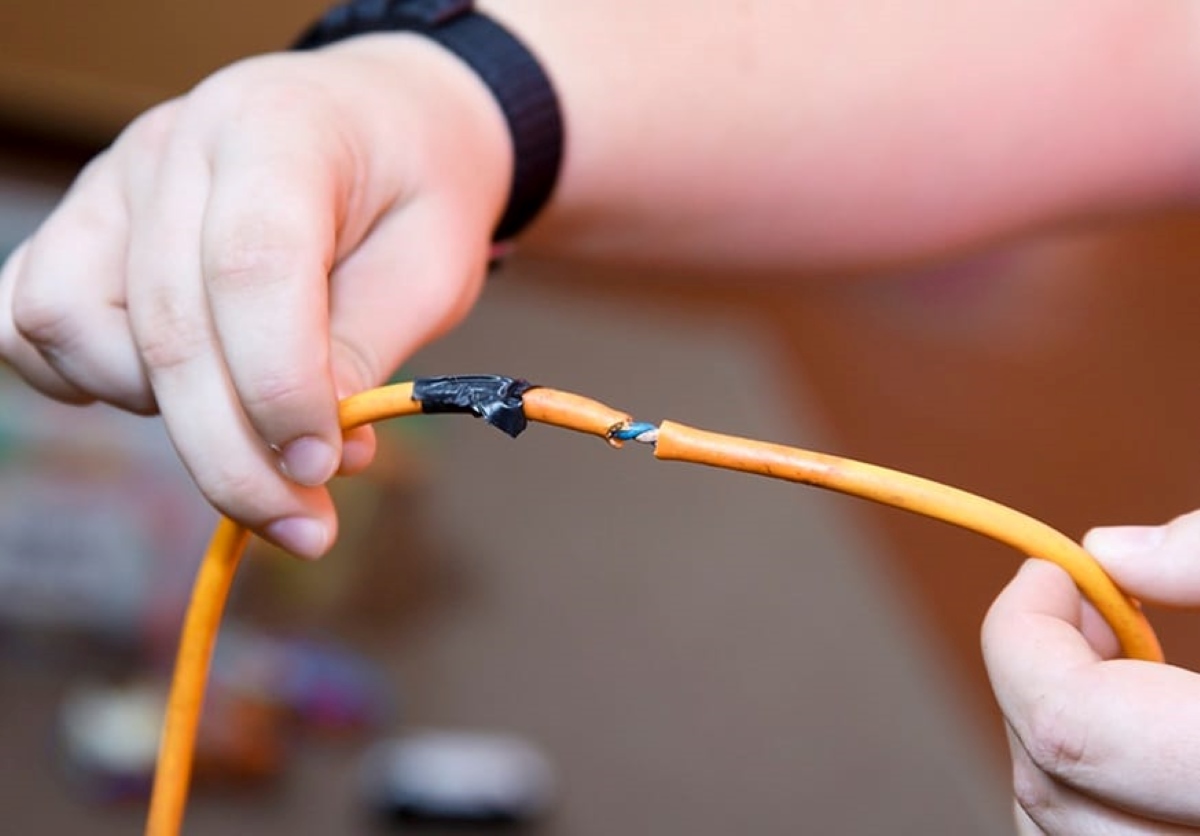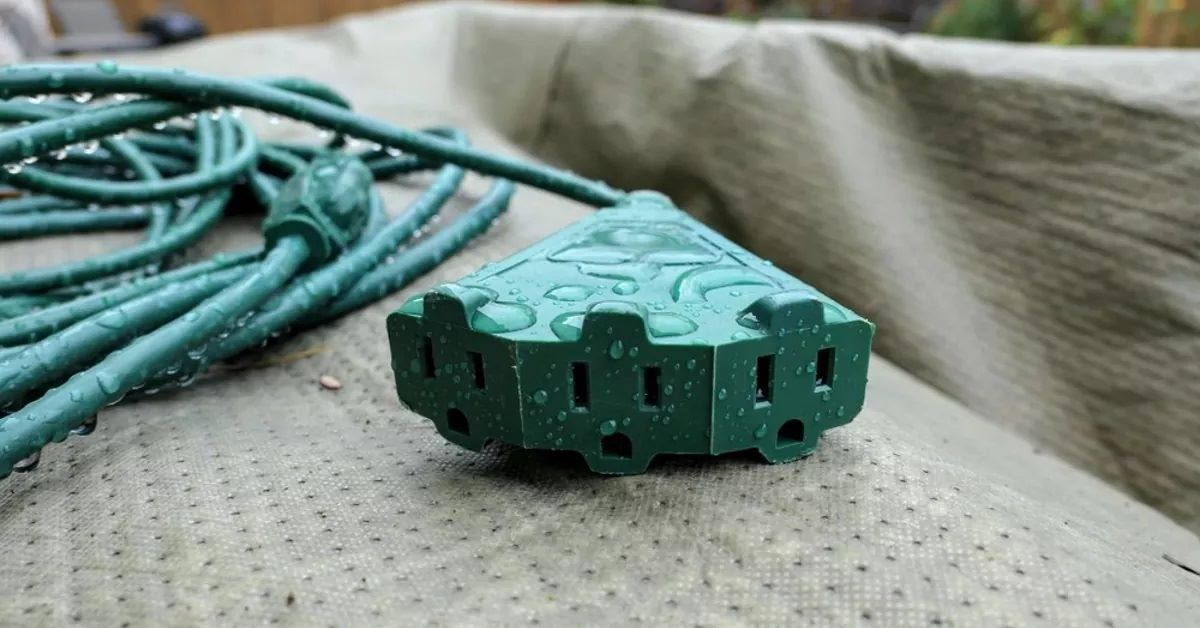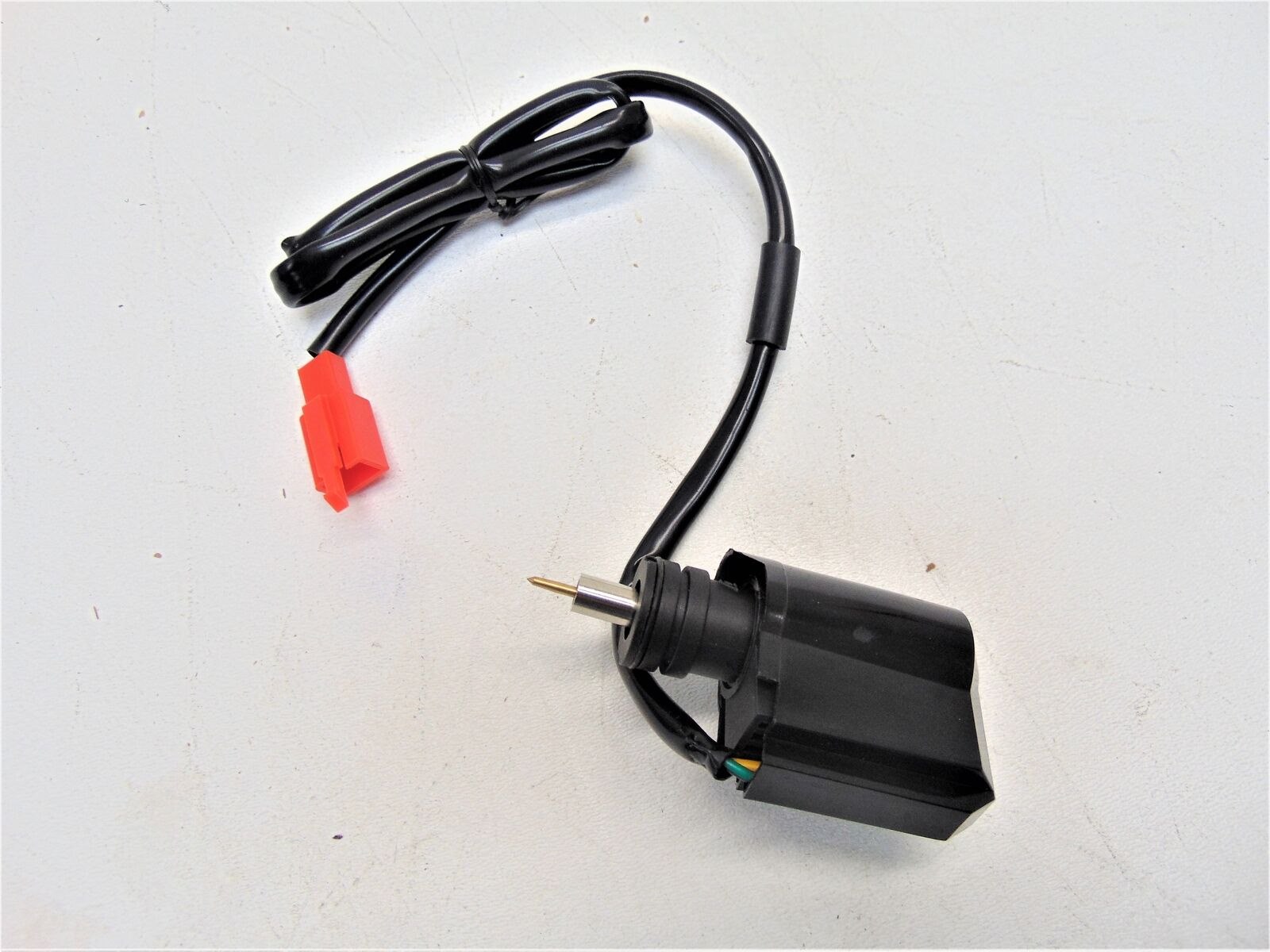

Articles
What Do The Magnets Do On My Electrical Cord
Modified: August 26, 2024
Discover the role of magnets in electrical cords with this informative article. Learn how magnets help to secure and organize your cords for a safer and tidier environment.
(Many of the links in this article redirect to a specific reviewed product. Your purchase of these products through affiliate links helps to generate commission for Storables.com, at no extra cost. Learn more)
Introduction
When you look at your electrical cord, you may notice small cylindrical objects embedded in it. These objects are magnets, and they serve important functions in ensuring that your cord remains tangle-free, secure, and efficient. Understanding the role of magnets in electrical cords can help you appreciate their significance and utilize them effectively.
Magnets have been used for centuries in various applications, from compasses to powering electric motors. In electrical cords, magnets are strategically placed to enhance the cord’s functionality and usability. In this article, we will explore the different types of magnets used in electrical cords and dive into the specific functions they serve.
Key Takeaways:
- Magnets in electrical cords prevent tangling, secure cords in place, protect against damage, and enhance electrical flow, contributing to a safer, more organized environment and a stable power supply.
- By strategically utilizing magnets, you can say goodbye to tangled cords and create a well-organized, efficient cord system that improves your overall experience and productivity.
Read more: What Electrical Cord Do I Need For My RV
Understanding Magnets
Before delving into the functions of magnets in electrical cords, it’s important to have a basic understanding of how magnets work. Magnets are objects made from materials that have the ability to create a magnetic field. This magnetic field attracts or repels other magnets or magnetic objects.
Magnets have two poles, known as the north pole (N) and the south pole (S). Like poles repel each other, while opposite poles attract. This fundamental principle allows magnets to perform various tasks in electrical cords.
In electrical cords, magnets are typically made from materials such as neodymium, ferrite, or alnico. These materials have excellent magnetic properties and are capable of generating strong magnetic fields. The magnets used in electrical cords are generally small, cylindrical in shape, and discreetly embedded within the cord.
It’s important to note that magnets used in electrical cords are typically permanent magnets. Unlike temporary magnets, such as those created by an electromagnetic field, permanent magnets retain their magnetic properties without the need for an external power source.
Types of Magnets
There are different types of magnets used in electrical cords, each with its own set of characteristics and strengths. Here are the most common types of magnets you’ll find in electrical cords:
- Neodymium Magnets: These magnets are known for their exceptional strength and are commonly used in electrical cords. Neodymium magnets are made from an alloy of neodymium, iron, and boron, and they generate a strong magnetic field relative to their size. This allows for effective cable management and secure attachment.
- Ferrite Magnets: Ferrite magnets are another widely used type of magnet in electrical cords. They are composed of ceramic materials and are known for their high resistance to demagnetization. Ferrite magnets are cost-effective and provide good magnetic performance for cord management.
- Alnico Magnets: Alnico magnets are made from a combination of aluminum, nickel, and cobalt. They are known for their excellent temperature stability and durability. While not as strong as neodymium magnets, they are still effective in securing cords and reducing tangling.
These different types of magnets offer various levels of magnetic strength and performance. The choice of magnet type in electrical cords depends on factors such as the cord’s intended use, the desired level of cord management, and the cost considerations.
Functions of Magnets in Electrical Cords
Magnets play a crucial role in ensuring that electrical cords remain organized, secure, and efficient. Here are some of the primary functions of magnets in electrical cords:
- Preventing Tangling and Messiness: One of the main functions of magnets in electrical cords is to prevent tangling and create a neat and organized appearance. By strategically placing magnets along the length of the cord, they can attract and hold the cord together, reducing the likelihood of knots and tangles.
- Securing the Cord in Place: Magnets are also used to secure electrical cords in place. By attaching magnets to metal surfaces or using magnetic clips, cords can be held firmly in position, preventing them from sliding or getting in the way. This is particularly useful in workspaces or areas where cords need to be kept in specific positions.
- Protecting the Cord from Damage: Magnets provide a protective function for electrical cords. By keeping the cord neatly organized and preventing it from being loosely strewn about, magnets reduce the risk of the cord getting twisted or caught on objects, minimizing the chances of damage or wear.
- Enhancing Efficiency of Electrical Flow: Magnets can improve the efficiency of electrical flow in cords. When cords are carefully managed and kept organized with magnets, there is less resistance and interference in the flow of electricity. This ultimately helps in maintaining a stable and consistent power supply.
These functions make magnets an integral component of electrical cords, offering both practical benefits and added convenience in managing and maintaining cord usability.
Preventing Tangling and Messiness
One of the primary functions of magnets in electrical cords is to prevent tangling and create a sense of organization. Tangling cords can be both frustrating and time-consuming, not to mention the potential damage that can occur from untangling knots. Magnets play a crucial role in eliminating these issues and ensuring that your cords remain neat and tidy.
By strategically placing magnets along the length of the cord, they act as attractors, pulling the cord into a structured formation. These magnets effectively hold the cord together, reducing the likelihood of knots and tangles. Whether it’s a power cord for your electronic devices or an extension cord for your work area, magnets keep your cords organized and hassle-free.
When cords are not properly managed, they can create a mess of wires that not only looks untidy, but also poses a safety risk. Loose cords are more prone to being tripped over or accidentally pulled, which can lead to electrical accidents or damage to your devices. With magnets holding the cords neatly in place, you can minimize these risks and create a safer environment.
In addition to preventing tangling, magnets also make it easier to store and transport your cords. Whether you are coiling them up for storage or taking them on the go, magnets keep your cords neatly bundled together, saving you precious time and effort. No more wrestling with a jumble of tangled wires when you need to use your cords – magnets ensure that they are ready for use at a moment’s notice.
Overall, magnets are essential in preventing the tangling and messiness of electrical cords. By organizing your cords with magnets, you can maintain a clean and efficient workspace, reduce the risk of accidents, and enjoy the convenience of easily accessible and tangle-free cords.
Magnets on electrical cords are used for cable management. They help keep the cord organized and prevent tangling. You can use them to secure the cord to metal surfaces for easy access and storage.
Securing the Cord in Place
Another important function of magnets in electrical cords is securing the cord in place. Whether you’re working in an office, a workshop, or at home, it’s crucial to keep cords in a fixed position to avoid trip hazards, accidental disconnections, or interference with other equipment. Magnets provide a simple and effective solution for holding cords securely in place.
Magnets can be attached to various surfaces or used in conjunction with magnetic clips to secure the cord. For example, you can use magnets to attach the cord to metal surfaces such as desks, walls, or machinery. The strong magnetic attraction ensures that the cord stays firmly in place, eliminating the risk of it being accidentally pulled or moved.
The ability to secure cords in place is particularly valuable in workspaces where safety and organization are a priority. By keeping cords off the floor and away from walkways, magnets help prevent tripping hazards and maintain a clutter-free environment. This is especially important in busy areas or construction sites where foot traffic is high and accidents are more likely to occur.
In addition, magnets provide a convenient solution for securing cords to vertical surfaces. By using magnetic clips or holders, you can easily attach and detach cords as needed, without the need for adhesive or other fastening methods. This versatility allows for quick and efficient cord management, especially in situations where cords may need to be repositioned frequently.
Whether it’s organizing cords in an office, securing power cables in a workshop, or keeping electronics cords in place at home, magnets serve as reliable anchors to ensure that cords remain securely fixed. By using magnets to secure your cords, you can create a safer and more organized space for everyone involved.
Protecting the Cord from Damage
Magnets in electrical cords also serve the important function of protecting the cord from damage. Cords can be vulnerable to wear and tear, which can lead to fraying, exposed wires, or even electrical hazards. Magnets help maintain the integrity of the cord by keeping it organized and preventing it from being loosely strewn about or tangled with other objects.
When cords are left in a messy, tangled state, they are more likely to get twisted, caught on furniture, or entangled with other cords and objects. This can result in unnecessary strain on the cord, leading to potential damage over time. By using magnets to keep the cord neat and organized, you can minimize the risk of twisting or tangling, prolonging the lifespan of the cord.
Furthermore, magnets help protect the cord from external hazards. When cords are left exposed or lying on the ground, they can be susceptible to accidental damage from foot traffic, heavy objects being placed on them, or being pulled or tripped over. By securing the cord in place with magnets, you create a barrier of protection that reduces the risk of accidental damage.
In addition to physical protection, magnets also help prevent electrical hazards. When cords are properly organized, there is less chance of them coming into contact with moisture, sharp objects, or other potential sources of electrical damage. By keeping the cord secured and away from potential hazards, magnets play a vital role in maintaining the electrical safety of your cord.
By utilizing magnets to protect your cords, you not only extend their lifespan but also minimize the risk of accidents and ensure a safer environment. Whether it’s in the workplace, at home, or in other settings, the protection provided by magnets contributes to the overall longevity and performance of your electrical cords.
Enhancing Efficiency of Electrical Flow
Magnets in electrical cords serve a crucial role in enhancing the efficiency of electrical flow. When cords are properly managed and organized with the help of magnets, it can lead to a smoother and more effective power supply.
One way magnets contribute to the efficiency of electrical flow is by reducing resistance. Resistance occurs when electricity encounters obstacles or interference, causing it to lose energy and potentially leading to voltage drops. When cords are tangled or twisted, the flow of electricity can be impeded, resulting in inefficient power transmission. By using magnets to keep cords organized and free from obstructions, the resistance is minimized, allowing for a more efficient electrical flow.
In addition to reducing resistance, magnets also contribute to the stability and consistency of the power supply. When cords are properly secured and positioned with magnets, there is less chance of them being accidentally pulled or disconnected. Loose or unstable connections can cause intermittent power interruptions or fluctuations, affecting the performance of connected devices. By using magnets to ensure a secure connection, you can maintain a stable power supply, reducing the risk of disruptions and potential damage to your devices.
Moreover, magnets can help reduce electromagnetic interference (EMI). When cords are neatly organized and kept away from other electrical equipment, the risk of EMI is minimized. Electromagnetic interference can cause disruption in electronic signals and can lead to reduced performance or interference with other devices. By using magnets to manage and separate cords, you can decrease the chances of EMI and enhance the overall efficiency of the electrical flow.
By enhancing the efficiency of electrical flow with the help of magnets, you can optimize the performance and reliability of your electrical cords. Whether it’s powering your electronic devices, running appliances, or operating machinery, a well-managed cord system contributes to a smoother and more efficient power supply.
Conclusion
Magnets play a significant role in enhancing the functionality and usability of electrical cords. By understanding the functions and benefits of magnets in cords, you can effectively utilize them to keep your cords organized, secure, and efficient.
The primary functions of magnets in electrical cords include preventing tangling and messiness, securing the cord in place, protecting the cord from damage, and enhancing the efficiency of electrical flow. These functions contribute to a safer and more organized environment, reducing the risk of accidents, prolonging the lifespan of the cords, and ensuring a stable power supply.
With the use of magnets, you can say goodbye to the frustration of tangled cords and the dangers of loose and disorganized wires. By strategically placing magnets and utilizing magnetic clips and holders, you can keep your cords neatly organized, free from obstacles, and securely attached to surfaces. This not only improves the overall appearance and tidiness of your space but also contributes to a more efficient workflow.
Magnets in electrical cords have become an essential component in various settings, from offices to workshops and homes. Their ability to prevent tangling, secure cords in place, protect against damage, and enhance electrical flow makes them invaluable in managing and maintaining cord usability.
So the next time you look at your electrical cord and see those small magnets, appreciate their significance and the benefits they offer. By utilizing the functions of magnets in electrical cords effectively, you can ensure a well-organized, secured, and efficient cord system that improves your overall experience and productivity.
Frequently Asked Questions about What Do The Magnets Do On My Electrical Cord
Was this page helpful?
At Storables.com, we guarantee accurate and reliable information. Our content, validated by Expert Board Contributors, is crafted following stringent Editorial Policies. We're committed to providing you with well-researched, expert-backed insights for all your informational needs.















0 thoughts on “What Do The Magnets Do On My Electrical Cord”